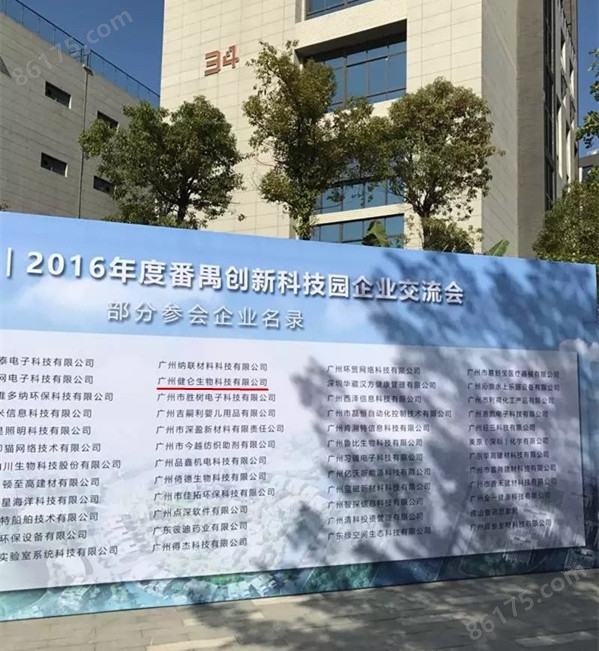创仑贾第虫Giardia核酸检测试剂盒
【简单介绍】
| 品牌 | 其他品牌 | 供货周期 | 现货 |
|---|
【详细说明】
贾第虫Giardia核酸检测试剂盒
广州健仑生物科技有限公司
广州健仑长期供应各种生物原料,主要代理品牌:美国Seracare、西班牙Certest、美国Fuller、美国NOVABIOS、 Cellabs等等。
Cellabs公司是一个的生物技术公司,总部位于澳大利亚悉尼。专门研发与生产针对热带传染性疾病的免疫诊断试剂盒。其产品40多个国家和地区。1998年,Cellabs收购TropBio公司,进一步巩固其在研制热带传染病、寄生虫诊断试剂方面的位置。
贾第虫Giardia核酸检测试剂盒
该公司的Crypto/Giardia Cel IFA是国标*推荐的两虫检测IFA染色试剂、Crypto Cel Antibody Reagent是UK DWI水质安全评估检测的*抗体。
【Cellabs公司产品介绍】
公司的主要产品有:隐孢子虫诊断试剂,贾第虫诊断试剂,疟疾诊断试剂,衣原体检测试剂,丝虫诊断试剂,锥虫诊断试剂等。Cellabs 的疟疾ELISA试剂盒成为临床上的一个重要的诊断工具盒科研上的重要鉴定工具。其疟疾抗原HRP-2 ELISA检测试剂盒和疟疾抗体ELISA检测试剂盒已经成为医学研究所的*试剂盒。Cellabs产品主要包括以下几种方法学:直接(DFA)和间接(IFA)免疫荧光法,酶联免疫吸附试验(ELISA),和胶体金快速测试。所有产品都是按照GMP、CE标志按照ISO13485。
【Cellabs公司中国总代理】
Cellabs公司中国代理商广州健仑生物科技有限公司自2014年就开始与Cellabs公司携手达成战略合作伙伴,热烈庆祝广州健仑生物科技有限公司成为Cellabs公司中国总代理商。
我司为悉尼Cellabs公司在华代理商,负责Cellabs产品在中国的销售及售后服务工作,详情可以我司公司人员。
主要产品包括:隐孢子虫诊断试剂,贾第虫诊断试剂,疟疾诊断试剂,衣原体检测试剂,丝虫诊断试剂,锥虫诊断试剂等。
广州健仑生物科技有限公司与cellabs达成代理协议,欢迎广大用户咨询订购。
我司还提供其它进口或国产试剂盒:登革热、疟疾、流感、A链球菌、合胞病毒、腮病毒、乙脑、寨卡、黄热病、基孔肯雅热、克锥虫病、违禁品滥用、肺炎球菌、军团菌、化妆品检测、食品安全检测等试剂盒以及日本生研细菌分型诊断血清、德国SiFin诊断血清、丹麦SSI诊断血清等产品。
欢迎咨询
欢迎咨询2042552662
【Seracare产品介绍】
货号 | 产品名称 | 产品描述 | 规格 | |
免疫荧光试剂盒(IFA kit) | ||||
KR1 | Crypto Cel | 隐孢子虫(Cryptosporidium)间接免疫荧光检测试剂 | 50 Test | |
KR2 | Crypto/Giardia Cel | 隐孢子虫&贾第虫(Cryptosporidium & Giardia)间接免疫荧光检测试剂 | 50 Test | |
KG1 | Giardia Cel | 贾第虫(Giardia)间接免疫荧光检测试剂 | 50 Test | |
KC1 | Chlamydia Cel | 沙眼衣原体(Chlamydia trachomatis)间接免疫荧光检测试剂 | 50 Test | |
KC2 | Chlamydia Cel LPS | 衣原体 lipopolysaccharide (LPS)间接免疫荧光检测试剂 | 50 Test | |
KC3 | Chlamydia Cel Pn | 肺炎衣原体(Chlamydia pneumoniae)间接免疫荧光检测试剂 | 50 Test | |
KP1 | Pneumo Cel | 卡氏肺孢子虫(Pneumocystis carinii)间接免疫荧光检测试剂 | 50 Test | |
KP2 | Pneumo Cel Indirect | 卡氏肺孢子虫( Pneumocystis carinii)间接免疫荧光检测试剂 | 50 Test | |
酶免试剂盒 ELISA kit | ||||
KG2 | Giardia CELISA | 贾第虫(Giardia)ELISA kit | 96 Test | |
KE1 | Entamoeba CELISA Path | 溶组织内阿米巴(Entamoeba histolytica) ELISA kit | 96 Test | |
KF1 & KF2 | Filariasis CELISA | 班氏丝虫(Wuchereria bancrofti ) ELISA kit |
| |
KM2 | Malaria Antigen (HRP2) CELISA | 恶性疟原虫(Plasmodium falciparum) 抗原 ELISA kit | 192 Test | |
KMC3 | Pan Malaria Antibody CELISA | 间日、三日、恶性及卵形疟疾(Malaria)ELISA IgG kit | 192 Test | |
KT2 | T. cruzi IgG CELISA | 克氏锥虫(Trypanosoma cruzi) ELISA IgG kit | 192 Test | |
KT3 | Toxocara IgG CELISA | 弓首线虫(Toxocara canis) ELISA IgG kit | 192 Test | |
KF3 | Filariasis Ab (Bm14) CELISA | 淋巴丝虫病(lymphatic filariasis) ELISA IgG kit | 480 Test | |
KM7 | Quantimal™ pLDH Malaria CELISA | 疟疾pLDH抗体检测 ELISA kit | 96 Test | |
二维码扫一扫
【公司名称】 广州健仑生物科技有限公司
【】 杨永汉
【】
【腾讯 】 2042552662
【公司地址】 广州清华科技园创新基地番禺石楼镇创启路63号二期2幢101-3室
【企业文化】



在胚胎第六周之初或长约9mm时又出现第 三个凹向背侧的弯曲,称桥曲,这样就把菱脑分为后脑 (metencephalon)和末脑(myelencephalon)(图10—4B)。在长 约5mm的人胚,前脑与中脑开始能明确分开,同时,脑前壁在视泡前方 和上方向背侧膨隆而成大脑半球初形。此时原始前脑出现两个界限不 清的地区:前部是半球隆凸,不久增大为端脑(encephalon), 后部为间脑(diencephalon)。中脑则无明显变化。 原始后脑顶壁 极薄,其下面的管腔底面为一菱形凹陷,即菱形窝。在此窝zui宽部分 以上的顶板缩窄,旁壁加厚,将来形成脑桥和小脑,以下其余部分为 延髓。 上述演化结果,使脑有了五个明确的部分,即端脑、间脑、中 脑、后脑和末脑。人脑的各个部分都是从这些后起的脑泡演变而来的 ,但在发育过程中,端脑极度扩大,覆盖住其余的脑部。对外界环境 的刺激发生反应是动物特性之一,神经系统是在动物进化过程中逐渐 演变发展起来的。它经历了没有特殊分化的神经组织,只是依靠原生 质传导刺激的单细胞动物,到初现神经组织的腔肠动物的网状神经系 统,再由分散的网状神经系统阶段进化为扁虫的梯形、环节动物的链 状神经系统,进而到脊索动物出现中空的管状神经系统,这是一个从 无到有,从分散到集中,从简单到复杂的演化历程。由于感受器集中 在头部,神经管的前端终于发展成脑。 神经系统的中枢和周围部分都 来源于胚胎背面外胚层的神经板(neural plate),它zui初见于人胚 第三周长约 1.5mm时。由于神经板周边部分生长较快,向背面隆起, 隆起之间形成的纵沟称神经沟(neural groove)。在胚胎第四周长 约2.5mm时,随着神经沟的不断加深,两侧的神经板也向背侧正中线包 卷、融合,并脱离覆盖它的外胚层,这样就形成了神经管(neural tube),中空的管道称中央管。管在头、尾两端遗留的孔,分别在胚 胎第四周初及第四周之末闭合(图10—3)。
At the beginning of the sixth week of the embryo, or about 9 mm in length, a third concave dorsal curve appears, called the bridge bend, thus dividing the rhesus into the metencephalon and the myelencephalon (Fig. 10-4B). In human embryos approximay 5 mm long, the forebrain and the midbrain can be clearly separated. At the same time, the anterior brain wall bulges in the anterior and posterior direction of the optic vesicule and becomes a primary hemisphere. At this time, there are two unclear regions in the original forebrain: the front is a hemispherical bulge, and soon it is enlarged to the encephalon and the posterior to the diencephalon. The midbrain showed no significant changes. The top wall of the primitive posterior brain is very thin, and the bottom of the lumen below it is a diamond-shaped depression, that is, a diamond nest. In the widest part of this nest, the top plate is narrowed and the adjacent wall is thickened. In the future, the pons and cerebellum will be formed. The rest of the following will be medulla. The above-mentioned evolutionary results make the brain have five distinct parts, namely encephalon, diencephalon, midbrain, hindbrain, and terminal brain. Each part of the human brain evolved from these later brains, but during development, the encephalon is extremely enlarged and covers the rest of the brain. The response to external environmental stimuli is one of animal characteristics. The nervous system evolved gradually during the evolution of animals. It undergoes neural tissue without special differentiation. It relies only on unicellular animals stimulated by protoplasmic conduction to the reticular nervous system of the coelenterate that emerges from the nervous tissue, and then evolves from the dispersed reticular nervous system stage to the ladder of the flatworm. The chain nerve system of animals and animals, and then to the spinal cord animals appear hollow tubular nervous system, which is a development process from scratch, from dispersion to concentration, from simple to complex. As the susceptor is concentrated in the head, the front of the neural tube finally develops into a brain. The central and peripheral parts of the nervous system are derived from the neural plate of the embryo's dorsal ectoderm, which was originally found on the third week of human embryos at approximay 1.5 mm. Since the peripheral part of the nerve plate grows faster and bulges to the back, the longitudinal groove formed between the bulges is called a neural groove. When the fourth week of the embryo is about 2.5 mm in length, as the nerve groove continues to deepen, the nerve plates on both sides are also wrapped and merged into the dorsal midline, and are detached from the ectoderm covering it, thus forming a neural tube (neural) Tube) The hollow tube is called the central tube. The holes left in the head and tail of the tube are closed at the beginning of the fourth week of the embryo and the end of the fourth week (Fig. 10-3).
相关产品
- nicotine使用尿液检测的烟碱试剂盒
- INOVAANA ELISA Kit(试剂盒)
- Savyon—阿米巴(Entamoeba)免疫试剂盒
- 美国Nova-Lite HEp-2 ANA试剂盒(240)
- INOVA-ACA (抗心肌磷脂)IgMELISA试剂盒
- INOVA——htTG IgG ELISA试剂盒
- B2 GPI IgA ELISA 免疫试剂盒96T
- Cellabs锥虫(Trypanosoma ) 酶联IgG检测试剂盒
- Cellabs进口淋巴丝虫病IgG 试剂盒
- 来自Cellabs班氏丝虫ELISA试剂盒
- Cellabs进口澳大利亚的贾第虫酶联试剂盒诊断试剂
- 骨吸收BoneTRAP® (TRAcP 5b) 酶免试剂盒
- BoneTRAP®(TRAcP 5b) ELISA酶联免疫分析试剂盒
- 钙卫蛋白/乳铁蛋白双通道检测试剂盒价格
- 医院的自身免疫检测试剂盒
- 美国FOCUS霍乱弧菌免疫诊断试剂盒(O1群/O139群)
- 细菌类检测霍乱弧菌检测试剂盒(O139群)
- 霍乱弧菌O1群检测试剂盒(胶体金)
- 西班牙肠道传播霍乱弧菌检测试剂盒
- 药筛试纸药物滥用诊断试剂盒(吗啡、BAR)
- nicotine尼古丁检测试剂盒(酶联)
- 广州健仑生物Cotinine可替宁检测试剂盒(酶联)
- 西尼罗河间接免疫荧光法检测试剂盒
- 西尼罗河病毒荧光玻片法检测试剂盒
- 美国进口西尼罗河热检测试剂盒(酶联免疫法)
- 疟疾试纸(间日疟/三日虐/恶性疟/卵形疟)
- 肠道感染隐孢子病毒快速检测试剂盒
- 悉尼Cellabs隐孢子虫核酸PCR检测试剂盒
- 悉尼Cellabs隐孢子虫Cryptosporidium快速检测试剂盒
- 悉尼Cellabs贾第虫病毒引发腹泻检测试剂盒
- 悉尼Cellabs贾第虫病毒IgG酶联免疫诊断试剂盒
- 悉尼Cellabs溶组织内阿米巴ELISA法诊断试剂盒
- 创仑Giardia贾第虫核酸PCR检测试剂盒
- 创仑贾第虫Giardia核酸检测试剂盒
- 贾第虫Giardia ELISA法检测试剂盒
- lymphatic filariasis淋巴丝虫病毒检测试剂
- Toxocara canis弓首线虫ELISA法诊断试剂盒
- Cellabs克氏锥虫(Trypanosoma cruzi)检测试剂盒
- Cellabs班氏丝虫bancrofti ELISA检测试剂盒
- 澳大利亚悉尼阿米巴Entamoeba ELISA法诊断试剂盒
请输入产品关键字:
邮编:510660
联系人:杨永汉
电话:86-020-82574011
传真:86-020-32206070
手机:13802525278
留言:发送留言
个性化:www.jianlun45.com
网址:www.jianlun.com
商铺:https://www.chem17.com/st199246/


 QQ交谈
QQ交谈 MSN交谈
MSN交谈
